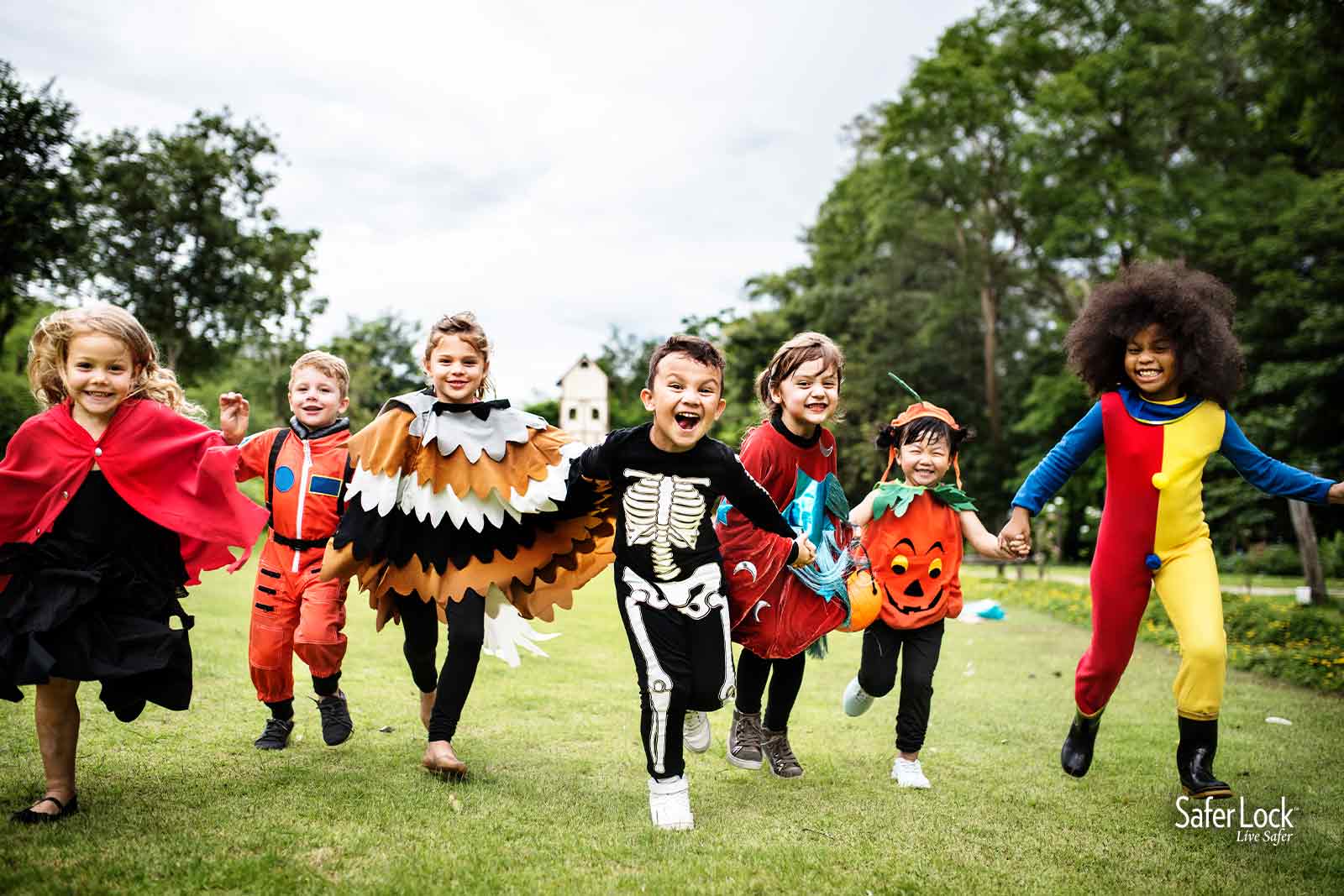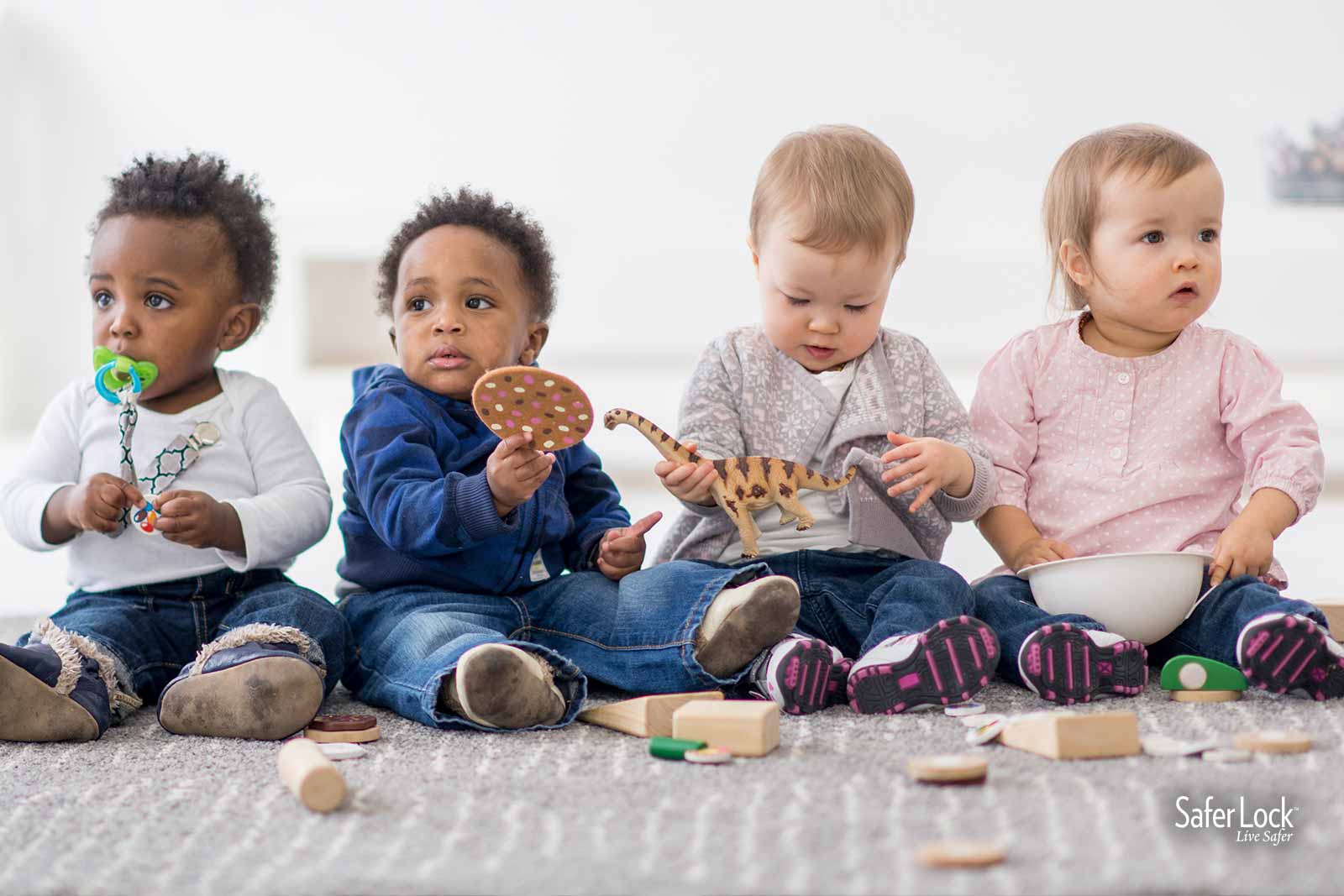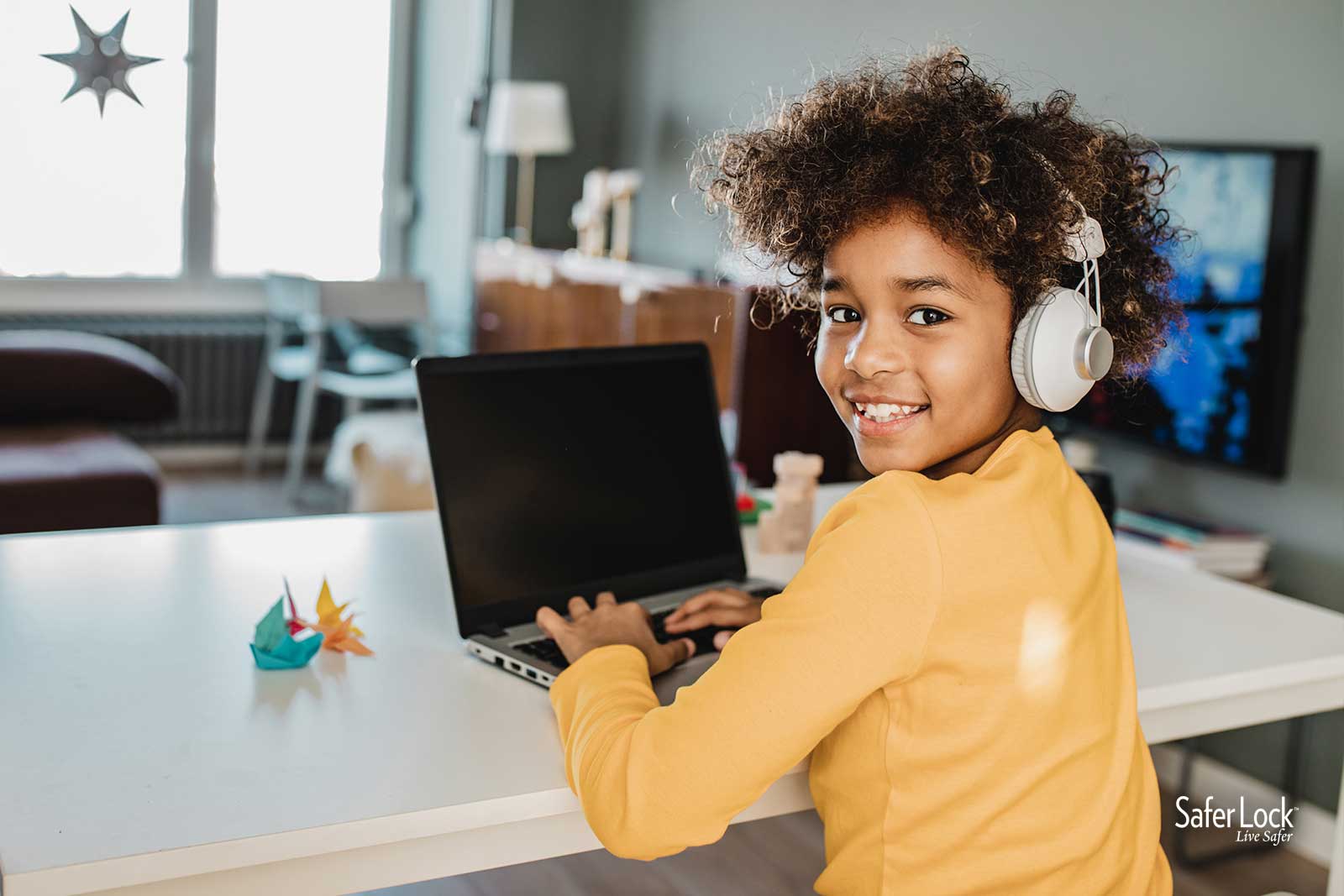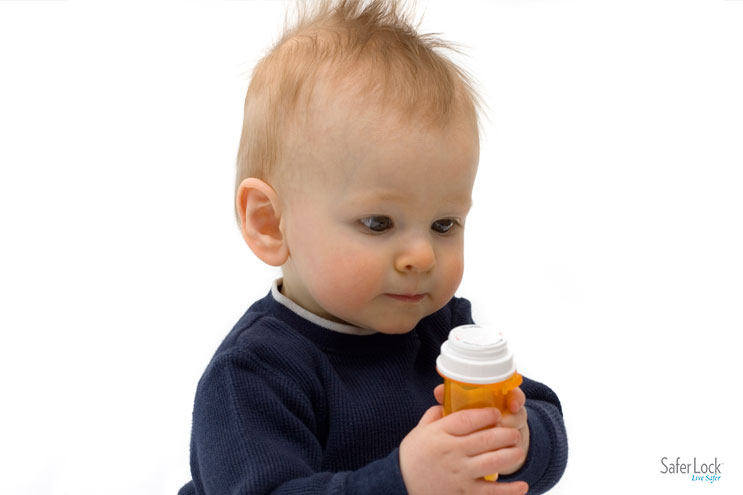Getting ready for Halloween? As you’re digging out your spooky decorations, choosing this year’s costumes, and prepping for parties, trick-or-treating, and fun fall festivities, be sure to keep your kids’ safety top of mind.
Explore our Halloween Safety Tips to keep your ghouls and goblins safe this year.
Trick or Treating Safety
According to Safe Kids Worldwide, children are twice as likely to be killed walking on Halloween than on any other day of the year.
Keeping your kids visible can go a long way to preventing unintended injuries as they cross streets on Halloween.
Help drivers see your kids:
- Choosing light-colored costumes over dark ones
- Add reflective tape or stickers
- Have kids carry glowsticks or flashlights
Help your kids trick-or-treat safely:
- Accompany kids aged 12 and under
- Remind kids to slow down and stay with the group
- Cross streets at corners and crosswalks
- Remind kids to look both ways before crossing the street
Costume Safety
Your little princess is excited to wear her sparkly heels and long, flowing gown—until, that is, she trips over her heels and gets tangled in the extra fabric of her dress.
Accidental falls increase at Halloween. Approximately 2,700 Halloween-related injuries involved trips and falls, according to the U.S. Consumer Product Safety Commission.
Especially with younger kids, costumes can play a large factor in trips and falls.
- Be sure that costumes are not too long and will not tangle around your child’s feet and legs.
- Choose facepaint over costume masks, which can inhibit vision and cause trips or falls.
- Make sure that costumes don’t prohibit a full range of movement so your child can safely move around.
- Ensure shoes fit, are comfortable, and allow easy walking and running.
Pumpkin Carving Safety
Pumpkin carving is a Halloween tradition, and an activity rife with injury potential.
Because pumpkins are round, tough, and slippery, pumpkin carving can sometimes result in slice, puncture, cut, or stab wounds to hands and fingers, which could result in a quick trip to the hospital, according to the American Society for Surgery of the Hand (ASSH).
To reduce the risk of injury, safety experts with the AAOS, the U.S. Consumer Product Safety Commission, and ASSH offer these tips:
- Dry your hands and the pumpkin before carving.
- Use the right tools. If you can, use a pumpkin-carving kit that has specialty tools designed to carve through rinds, poke holes, and scoop out the pumpkin seeds and innards.
- Stabilize the pumpkin by placing one hand on top of the pumpkin and then carving, working your way downward. You can also cut a hole in the bottom of the pumpkin to scoop out the insides.
- Use a spoon to remove the seeds.
- Work in a clean, dry, well-lit area when you carve the pumpkin.
- Don’t let young kids carve the pumpkin. You can have them draw the pattern that you plan to cut and scoop out the insides, but kids 14 and under shouldn’t use the cutting tools to carve.
- Stand at least two arm’s lengths away if you are watching someone else carve the pumpkin.
- To prevent fires, consider using a flashlight instead of a candle in your carved jack-o’-lantern.
- If you do cut yourself, apply direct pressure to the wound with a clean, dry cloth. Then, clean the wound with an antibiotic, and apply a bandage. If the bleeding doesn’t stop in 15 minutes, seek medical attention.
Fire Safety
Halloween costumes can also be fire hazards. In 2015, a 7-year-old-boy suffered severe burns after the sleeve of his costume came into contact with a lit candle at a Halloween party.
See this ABC News video and watch how quickly some costumes can go up in flame.
Avoid costume fabric that billows or trails behind you, as these can easily ignite. If you are making your own costume, avoid loosely woven fabrics like linen and cotton, which can be very flammable.
According to the National Fire Protection Association (NFPA), your Halloween decorations can also increase the risk of structural fires. NFPA research has revealed an annual average of 770 home structure fires began with decorations between 2014 and 2018, resulting in an annual average of two fire deaths and 30 fire injuries.
Prevent Halloween fires at home:
- Decorations: Many common decorations like cornstalks, crepe paper, and dried flowers are very flammable. Keep these and similar decorations far away from any open flames or heat sources, like candles, heaters, and light bulbs.
- Candles: Using candles as decoration can be risky if not done correctly. Keep them in a well-attended area out of the path of potential trick-or-treaters. Remind children of the dangers of open flames, and make sure they are always supervised when candles are lit. Extinguish candles before leaving an area.
- Jack-o-lanterns: Glow sticks or electric candles are the safest choice when it comes to lighting up your jack-o-lantern, but if you choose to use a real candle, do so with extreme caution. Light a candle inside a jack-o-lantern using long fireplace matches or a utility lighter and keep it away from other decorations.
- Smoke Alarms: This is a great time to make sure your smoke alarms are functional and up to date.
- Exits: Exits are NOT an appropriate place for decorations. When decorating, ensure that nothing is blocking any escape routes.
Accidental Poisoning Safety
The “candy poisoned by strangers” myth is still alive and well. Fortunately, this Halloween myth has been debunked numerous times. Unfortunately, poisoning is still a risk at Halloween time.
“Although mishaps occur all the time, trick-or-treaters and their families are at increased risk of accidental poisoning related to Halloween celebrations and activities,” says Diane Calello, executive and medical director of the New Jersey Poison Control Center at Rutgers New Jersey Medical School, Department of Emergency Medicine.
“Potential poisoning risks go beyond the fear of contaminated candy,” says Calello. “Our medical professionals get calls throughout the night about many things – from glow sticks to allergic reactions; belly aches to marijuana edibles; and chemical burns to alcohol poisoning.”
- Go only to the homes of people you know.
- Avoid homemade treats to avoid the risk of food poisoning.
- Teach your child that medicine is not candy. Lock up all medications to prevent accidental poisoning.
- Make sure children and pets can’t access alcoholic beverages if you’re hosting or attending a party
- Use non-toxic makeup to paint faces and body parts. Test on a small area of skin to be sure it will not cause an allergic reaction.
- Dry ice can cause severe burns and frostbite if it touches the skin or is swallowed. Use gloves to protect your skin.
- Program the Poison Control number into your phone: 1 (800) 222-1222
Have a Safe and Fun Halloween
Celebrating Halloween can be a lot of fun with your kids. From creating costumes to carving pumpkins, the opportunities to make memorable moments are endless. Don’t let a preventable accident ruin the holiday. Make safety a priority this Halloween.



